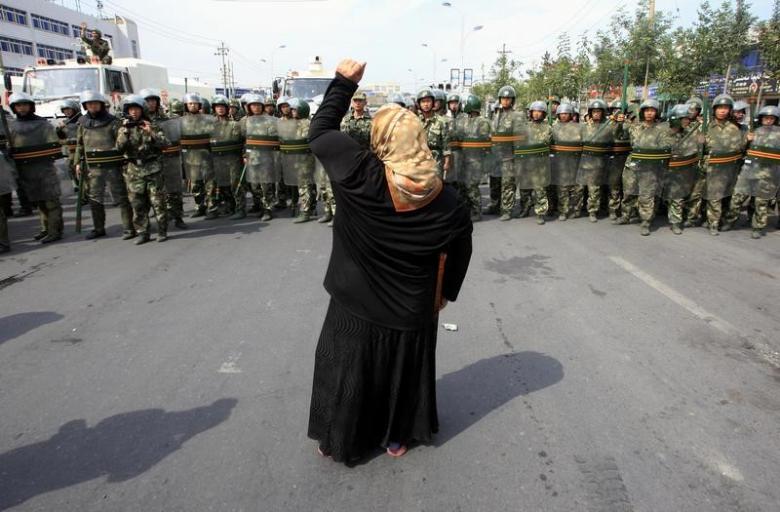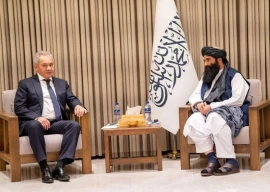
Chinese President Xi Jinping has focused to ‘Sinocise’ the country’s minorities in the last one year. At the same time, leaders in the Muslim-majority have region have increased shadowing of the ethnic minority.
The president on Friday ordered a meeting of Xinjiang officials to ensure there is stability in the region, advising them to create a “great wall of iron” – an analogy to former Chinese leader Deng Xiaoping using the term “great wall of iron and steel” to applaud the People’s Liberation Army’s dealing of a pro-democracy protest in Tiananmen Square in 1989.
Chinese police kill three rioters in Xinjiang
While some scholars debate about the truth in militancy penetrating the country, Chinese officials remain apprehensive about religious militancy growing around the world and seeping into China. On Sunday, Xinjiang’s top political and legal affairs party member, Shaerheti Ahan told a gathering of National People’s Congress to remain informed about the ‘international anti-terror situation” and its peril to destablise China.
Sentiments in the Ningxia Hui Autonomous Region, consisting of Muslims descending from Silk Road centuries back, are similar to that of Xinjiang. While speaking at a regional meeting, the secretary of Ningxia Communist Party secretary Li Jianguo also cautioned against the growing militant threat in the region.
"What the Islamic State and militants push is terror, violence," Li said. "This is why we see Trump targeting Muslims in a travel ban. It doesn't matter whether anti-Muslim policy is in the interests of the US or it promotes stability, it's about preventing militancy from seeping into all of American culture."
An ethnic affairs official from the state believes that ideological work must be strengthened to promote Chinese identity. "The roots of the Hui are in China," Wu Shimin said. "To discuss religious consciousness, we must first discuss Chinese consciousness. To discuss the feelings of minorities, we must first discuss the feelings of the Chinese people."
China targets parents in new religion rules for Xinjiang
On the other side, a PhD student at the University of Hong Kong disagrees. Mohammad al-Sudairi, who is an expert on Islam in China, feels that the anti-Islam rhetoric by Ningxia officials hails from Beijing’s anti-Islam narrative, coined in the last year.
"There's a strengthening trend of viewing Islam as a problem in Chinese society," al-Sudairi said. "Xi Jinping has been quite anxious about what he saw as the loss of party-state control over the religious sphere when he entered power, which necessitated this intervention. I don't think things will take a softer turn."
The Xinjiang issue is not new to China. From violent demonstrations to the Chinese authorities’ strict measures against it, consequently delving the state into a cycle of repression, vehemence and a separatist movement. While the government links separatist activists to al-Qaeda and Islamic State, there is little proof to their claims.
This article originally appeared on the Yahoo News.

















COMMENTS (2)
Comments are moderated and generally will be posted if they are on-topic and not abusive.
For more information, please see our Comments FAQ